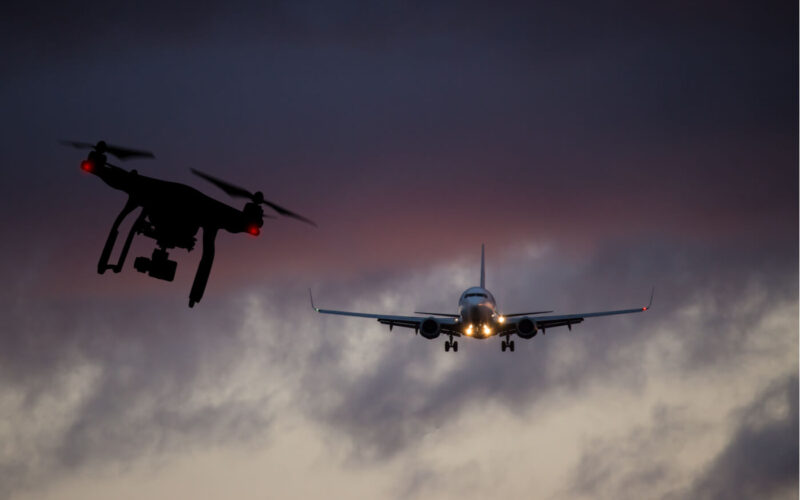Over the past ten years, the growing availability of Unmanned Aerial Vehicles (UAV), commonly known as drones, has been a blessing for video enthusiasts and other tech addicts. But it also created a headache for safety authorities. To respond to this flourishing market, countermeasures are being developed in parallel, and represent a full-fledged business today.
Very early after their appearance on the market, drones invited themselves on the battlefield. In 2014, the Islamic state was already using versions (Phantom 3 or 4) for reconnaissance. Then came the suicide drones, fitted with makeshift grenades.
Conventional armies are also increasingly relying on them. If the United States used to have a quasi-monopoly on offensive UAVs at the beginning of the 21st century, countries such as China, Russia, and even Iran are constantly trying to fill the gap.
In 2019, a wave of Iranian-made Qasef drones operated by the Houthi rebels took Saudi Arabia by surprise. Despite the presence of modern anti-aircraft missile systems such as the Patriot, the refineries of Abqaiq and Khurais, eastern Saudi Arabia, were heavily damaged, putting half of the country’s oil production to a halt.
Even in times of peace, UAVs can constitute a threat. In January 2019, drones caused a panic at London Gatwick Airport (LGW), United Kingdom, in the days preceding Christmas. The airport was closed for three days, creating a financial loss of several millions of pounds. The following months, less successful drone incidents also disturbed traffic at Changi Airport (SIN) in Singapore and at London Heathrow (LHR). To raise awareness of this danger and the lack of readiness, Greenpeace activists intentionally crashed several drones against French nuclear plants.
A drone to rule them all
In a similar fashion to the airports that have decided to rely on falconry to prevent birdstrikes, Fortem Technologies has decided to fight fire with fire. The US-based company offers several solutions to secure sites at risk from drone threats.
A centralized system called SkyDome relies on an array of sensors, cameras and radars to monitor the surroundings and identify potential threats. The integrated artificial intelligence is capable of differentiating a bird from a drone, and to judge if the latter poses a threat or not.
Once the threat is identified, SkyDome sends the HunterDrone capable to intercept the culprit and to fish it out of the air using a projectable net.
Fortem Technologies has recently caught the interest of the U.S. Department of Defense (DoD). On February 3, 2020, the company announced it had been awarded a contract through the Defense Innovation Unit (DIU). While the price of the contract is unknown, it appears that the DoD chose to acquire the whole set of solutions. “Fortem has a number of technologies that can help protect military bases without adverse effects to local communities,” the manufacturer said.
The Israeli company Rafael also offers a centralized system, but with a different solution. Named DroneDome (in reference to the Iron Dome that defends Israel from missile threats) it relies either on a precise jammer, or on a powerful laser. It was this system that put an end to Gatwick’s mayhem. It was also used in 2018 to secure the G20 Buenos Aires summit.
Man-portable solutions also exist. During the last national day in France, the military presented to the officials two anti-drone rifles (the Nerod F5 by the French-based MC2-Technologies and the DroneGun Tactical by the Australian company DroneShield). The purpose of those Star-Wars-like devices is not to destroy the enemy drones as one could expect, but to jam their signals.
Sinon pour dégommer les drones il y a ce fusil Nerod F5 de la start-up lilloise MC2-Technologies. #FrenchTech. Il sature les coms entre UAV et télécommande. pic.twitter.com/NpY4ZPDnVQ
— Damien Licata Caruso (@DamienLicata) August 7, 2018
When they lose contact with their control base, drones usually go back to their takeoff point or stay in stationary flight until they run out of battery. That solution avoids for dangerous debris to fall and create collateral damages, for example onto a crowd during an event.

